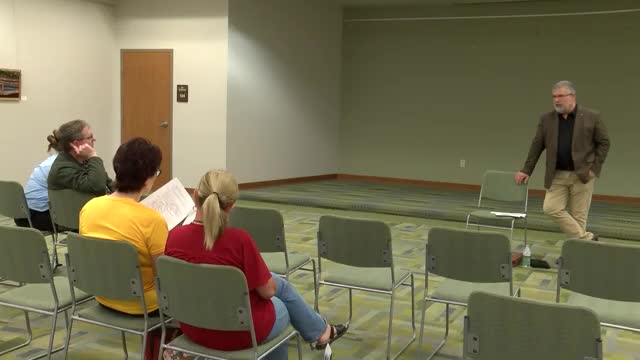Local leaders push for juvenile-justice bill to separate criminogenic youth from foster care
October 16, 2025 | Sedgwick County, Kansas
This article was created by AI summarizing key points discussed. AI makes mistakes, so for full details and context, please refer to the video of the full meeting. Please report any errors so we can fix them. Report an error »

Sedgwick County Commissioner Jim Howell discussed juvenile-justice legislation (House Bill 2329), a planned community roundtable and the county's position that the state needs to separate criminogenic youth from children placed in foster care.
What was said
Howell said Senate Bill 367 (2016) substantially rewrote the juvenile code and led to reductions in group-home capacity across the state. He said House Bill 2329 — which Howell said passed the Kansas House and was awaiting action in the state Senate at the time of the briefing — would require separation of youths involved in criminal activity ("criminogenic kids") from children placed in foster care for abuse or neglect (often described as CINC — children in need of care). Howell said the bill would restore group-home capacity and create penalties for juveniles caught with firearms in non‑permitted circumstances.
Howell scheduled a roundtable for Oct. 30 that he said would include the chair of the House Corrections Committee, the Senate Judiciary chair (as available), law enforcement, the district attorney, judges, Department for Children and Families representatives and local officials. Howell said the bill has opposition from the Department of Corrections and DCF, who have argued about mandates and funding, but he said the county believes the state can create group-home capacity and that separation is needed for public safety and for foster-care integrity.
Why this matters
Howell cited an increase in juvenile firearm contacts: "last year we actually booked into JIAC over 200 children with possession of firearms last year," he said (referring to local juvenile intake and assessment bookings). County officials said the lack of separate facilities for criminogenic youth strains foster-care resources and complicates case management.
Ending
Howell said the roundtable would be invitation-only and that county leaders are working to build consensus among judges, legislators, DCF and law enforcement to move the bill forward. He said the county favors targeted placements and services rather than mixing criminogenic youth with children in foster-care settings.
What was said
Howell said Senate Bill 367 (2016) substantially rewrote the juvenile code and led to reductions in group-home capacity across the state. He said House Bill 2329 — which Howell said passed the Kansas House and was awaiting action in the state Senate at the time of the briefing — would require separation of youths involved in criminal activity ("criminogenic kids") from children placed in foster care for abuse or neglect (often described as CINC — children in need of care). Howell said the bill would restore group-home capacity and create penalties for juveniles caught with firearms in non‑permitted circumstances.
Howell scheduled a roundtable for Oct. 30 that he said would include the chair of the House Corrections Committee, the Senate Judiciary chair (as available), law enforcement, the district attorney, judges, Department for Children and Families representatives and local officials. Howell said the bill has opposition from the Department of Corrections and DCF, who have argued about mandates and funding, but he said the county believes the state can create group-home capacity and that separation is needed for public safety and for foster-care integrity.
Why this matters
Howell cited an increase in juvenile firearm contacts: "last year we actually booked into JIAC over 200 children with possession of firearms last year," he said (referring to local juvenile intake and assessment bookings). County officials said the lack of separate facilities for criminogenic youth strains foster-care resources and complicates case management.
Ending
Howell said the roundtable would be invitation-only and that county leaders are working to build consensus among judges, legislators, DCF and law enforcement to move the bill forward. He said the county favors targeted placements and services rather than mixing criminogenic youth with children in foster-care settings.
View full meeting
This article is based on a recent meeting—watch the full video and explore the complete transcript for deeper insights into the discussion.
View full meeting
